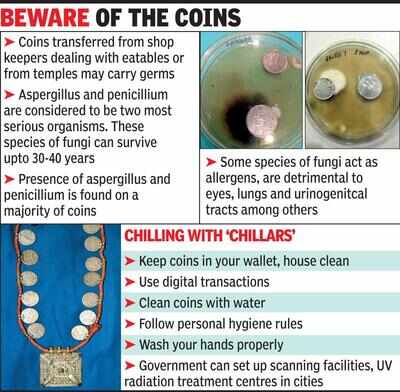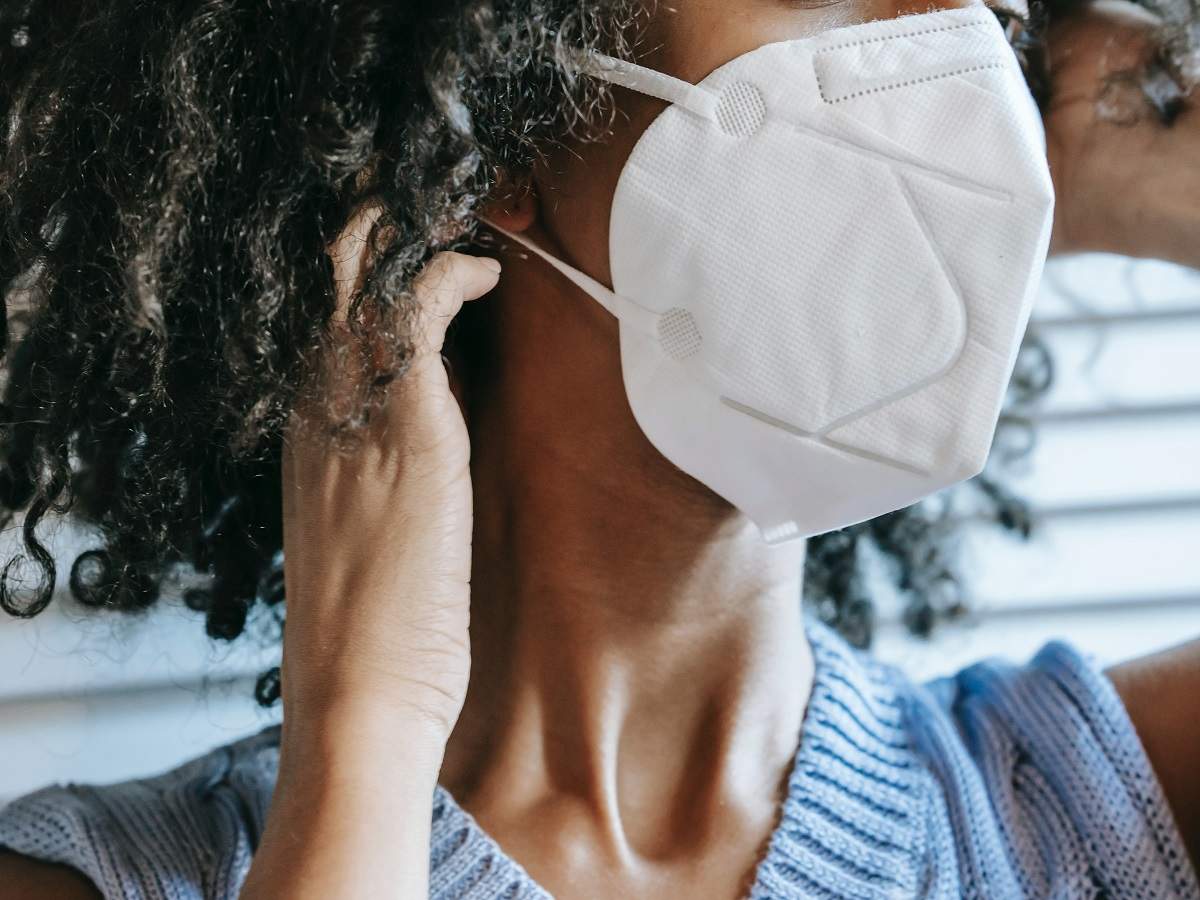
Vadodara: The ‘chillar’ (coins) that passes from one hand to another can also cause allergy and skin diseases. A study carried out by the students of M S University’s Department of Environmental Studies on Indian and foreign has revealed the presence of certain fungi on coins.
The study titled ‘Fungal flora associated with Indian and foreign coins and their potential health risks’ has been published in ACTA scientific microbiology, an internationally peer-reviewed journal that covers significant advancements in the field of microbiology.
“Our students had studied 100 coins. Except three, all other coins had the presence of microorganisms. There were 12 types of fungi that were present on the coins,” said professor Arun Arya.
The coins on which the experiments were carried out were made of metals like iron, chromium, silver, copper, nickel and zinc.
“The experiments have shown that two fungi – aspergillus niger and penicillium simplicissimum were prominently present on the surface of the coins. Presence of other fungi – fusarium, Rhizopus and Alternaria spp was also found on the coins,” said Arya.
Fungi like aspergillus niger can produce organic acids like citric acid that can dissolve the metal or the shinning affect of even a new coin.
Fungi aspergillus niger can also cause allergy related to skin, can result in sneezing, tears from eyes or rashes on body.
“If a person has a weak immune system or is a severe patient suffering from ailments like cancer, TB or has undergone organ transplant when the body’s immune system is weak, these fungi settle in lung and multiply. This results in depletion of lung capacity,” said Arya.
It has been established that bacterias like E. coli and salmonella enteritidis can survive up to 11 to 9 days, respectively on the surfaces of coins, making it possible for the coins to transfer bacteria to human hands.
The students who worked on the project include Drishti Navlani, Aditi Maheshwari, Vidhatri Thakkar, Roheel Taunk and Naitik Chaudhary.
The study titled ‘Fungal flora associated with Indian and foreign coins and their potential health risks’ has been published in ACTA scientific microbiology, an internationally peer-reviewed journal that covers significant advancements in the field of microbiology.
“Our students had studied 100 coins. Except three, all other coins had the presence of microorganisms. There were 12 types of fungi that were present on the coins,” said professor Arun Arya.
The coins on which the experiments were carried out were made of metals like iron, chromium, silver, copper, nickel and zinc.
“The experiments have shown that two fungi – aspergillus niger and penicillium simplicissimum were prominently present on the surface of the coins. Presence of other fungi – fusarium, Rhizopus and Alternaria spp was also found on the coins,” said Arya.
Fungi like aspergillus niger can produce organic acids like citric acid that can dissolve the metal or the shinning affect of even a new coin.
Fungi aspergillus niger can also cause allergy related to skin, can result in sneezing, tears from eyes or rashes on body.
“If a person has a weak immune system or is a severe patient suffering from ailments like cancer, TB or has undergone organ transplant when the body’s immune system is weak, these fungi settle in lung and multiply. This results in depletion of lung capacity,” said Arya.
It has been established that bacterias like E. coli and salmonella enteritidis can survive up to 11 to 9 days, respectively on the surfaces of coins, making it possible for the coins to transfer bacteria to human hands.
The students who worked on the project include Drishti Navlani, Aditi Maheshwari, Vidhatri Thakkar, Roheel Taunk and Naitik Chaudhary.
Trending Topics
LATEST VIDEOS
City
 Bhuj sect's Swami stirs controversy, says 'If menstruating women cook food, they will be born as bitch in next life'
Bhuj sect's Swami stirs controversy, says 'If menstruating women cook food, they will be born as bitch in next life'  30 kg gold looted in Ludhiana, robbers caught on camera
30 kg gold looted in Ludhiana, robbers caught on camera  Jamia student files case against Delhi police, seek Rs 1 crore as compensation
Jamia student files case against Delhi police, seek Rs 1 crore as compensation  Mangaluru restaurant offers complementary biryani to blood donors
Mangaluru restaurant offers complementary biryani to blood donors
More from TOI
Navbharat Times
Featured Today in Travel
Get the app



